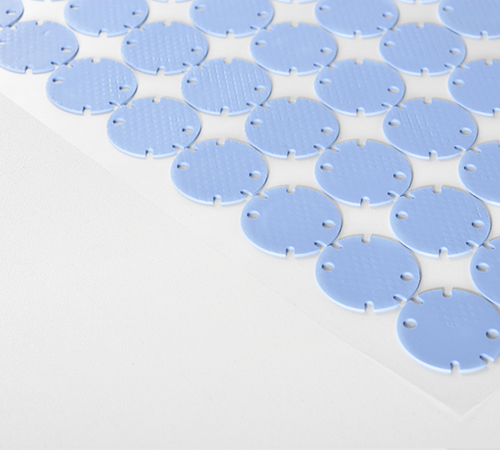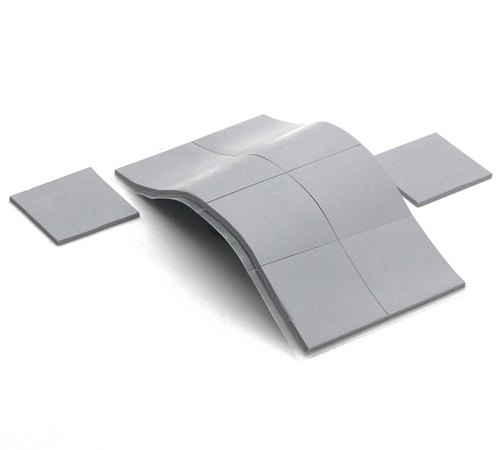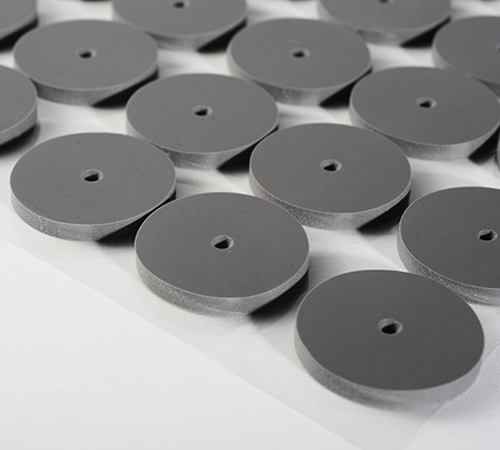
As modern computing devices continue to advance, addressing GPU (Graphics Processing Unit) heat dissipation has become a critical factor in maintaining system stability and longevity. Thermal pads, as an efficient thermal management material, play an indispensable role in GPU cooling. NFION explores the functions, principles, and key considerations for selecting and applying thermal pads in GPUs.
Challenges in GPU Heat Dissipation
GPUs handle large volumes of data in highperformance computing, graphics rendering, gaming, and AI applications, generating significant heat. If this heat is not dissipated efficiently, it can lead to performance degradation, hardware damage, or even system failure.
GPU cooling faces several challenges:
High Heat Density: GPUs have small chip areas but concentrated power consumption and heat output, requiring efficient thermal solutions.
Space Constraints: Modern devices are compact, demanding thinner and more flexible thermal materials.
Continuous Operation: GPUs must maintain stable thermal management during prolonged highload operations.
Functions of Thermal Pads
Thermal pads are flexible materials that efficiently transfer heat from the GPU chip to the heatsink or thermal module. Their roles can be summarized as follows:
Enhancing Thermal Conductivity
Thermal pads fill microscopic gaps between the GPU chip and heatsink, displacing air (a thermal insulator) to create a highly efficient thermal pathway. Their performance depends on thermal conductivity and interface compatibility.
Reducing Mechanical Stress
Due to uneven surfaces or microgaps between the GPU chip and heatsink, direct contact may cause localized stress. The softness of thermal pads absorbs mechanical stress, preventing hardware damage.
Providing Electrical Insulation
Certain thermal pads offer excellent electrical insulation, reducing the risk of short circuits between the GPU chip and heatsink, ensuring operational safety.
Enhancing Installation Flexibility
Thermal pads are easy to process, cut, and adapt to different shapes and thickness requirements, making them ideal for complex or spaceconstrained designs.
Applications of Thermal Pads in GPUs
Thermal pads are used in various aspects of GPU cooling systems:
Between the GPU Chip and Heatsink
This is the most common application, where thermal pads transfer heat from the GPU to the heatsink. For highperformance GPUs, pads with a thermal conductivity of 6 W/m·K or higher are recommended.
On VRAM and Power Modules
In addition to the GPU core, VRAM and power modules also generate heat. Thermal pads ensure efficient heat dissipation for these components, maintaining system stability.
In Custom Thermal Modules
Some highperformance GPUs adopt customized cooling designs. The flexibility of thermal pads enables them to fit complex structures, offering more design possibilities.
Key Considerations for Choosing Thermal Pads
Selecting the right thermal pad is critical for GPU cooling and requires consideration of the following factors:
Thermal Performance
The thermal conductivity of the pad is a key metric, which should match the GPU’s heat output.
Thickness and Compressibility
The gap between the GPU and heatsink determines the pad's thickness, and its compressibility ensures proper contact during installation.
Durability and Stability
Thermal pads must exhibit hightemperature resistance and antiaging properties for prolonged GPU operation.
Electrical Insulation
For systems with potential shortcircuit risks, choose pads with excellent electrical insulation, such as fiberglass clothbased silicone thermal pads.
Comparison with Other Thermal Materials
In GPU cooling, thermal grease (e.g., thermal grease) or metal sheets may also be used. Compared to these alternatives, thermal pads offer:
Ease of Installation: No need for precise application, simplifying the process.
Multifunctionality: Combines thermal, electrical insulation, and mechanical buffering properties.
EcoFriendliness: Some highquality thermal pads meet ROHS environmental standards, aligning with green design requirements.
Although thermal pads may have slightly lower thermal performance than highend thermal grease, their usability and versatility make them a key choice for GPU cooling.
Future Trends
As GPU power and performance continue to grow, thermal pad development will focus on:
Higher Thermal Conductivity: Creating materials with conductivity exceeding 15 W/m·K for extreme cooling needs.
Lightweight and Thin Designs: Meeting the stringent requirements of portable devices.
Smart Cooling: Integrating phasechange materials or optimized thermal interface technologies to enhance efficiency.
Conclusion
Thermal pads play a crucial role in GPU cooling, offering efficient thermal performance, flexibility, and multifunctionality that ensure stable operation. As thermal management demands grow increasingly complex, ongoing advancements in thermal pad technology will bring more innovative solutions, driving progress across the industry.

 CN >
CN >



